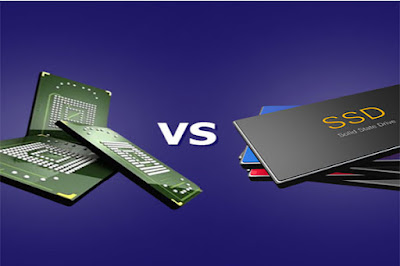eMMC vs SSD ?? What's the Difference. Check it Out.!! || tech talks group ||

If you're shopping for a new laptop, there are a lot of factors to think about. One of the most important aspects to consider is the kind of storage a laptop offers. Your average laptop (whether it's a 2-in-1, big and expensive, or budget-friendly and compact) will most likely sport either eMMC storage or SSD storage, but how are they different? Keep reading to learn more about eMMC hard drives vs. SSD hard drives. What Is eMMC Storage and How Does It Work? eMMC (embedded MultiMediaCard) storage is a form of internal storage made up of a controller and NAND flash memory, both of which are located in one integrated circuit. eMMC storage chips are usually embedded in a given device's motherboard. The controllers housed within eMMC chips have the ability to put data into storage, which, according to SearchStorage, allows the device's CPU to conserve its already limited speed and power for other computing tasks. In addition, eMMC's use of NAND flash memory also r...

